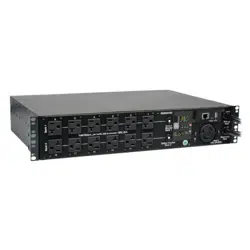Loading ...
Loading ...
Loading ...

180
5. CLI Commands
snmp-server
snmp-server
Use the snmp-server command to create and/or manage an outbound SNMP agent, i.e., SNMP recipient entry. The SNMP
version must be specified when creating a new entry. Use the no form of this command to delete the entry. When creating
an entry, select an easily remembered name as a label for the entry; this name will be used in the command format snmp-
server (<server-name>) when configuring the entry’s status and settings. To exit from the snmp-server (<server-name>)
command format, use either the end or exit commands.To create email notification recipients, use the email command; to
create SMS recipients, use the sms command.
Syntax
snmp-server <server-name>
• server-name – Specifies the SNMP recipient entry to be managed.
snmp-server <server-name> {v1 | v2 | v3}
• server-name – Sets the name of the SNMP recipient entry to be created. If spaces are required, bookend the name with
quotation marks (“).
no snmp-server <server-name>
• server-name – Specifies the SNMP recipient entry to be deleted.
Examples
The following command creates “SNMPrcvr1” as an SNMPv3 recipient:
console> snmp-server SNMPrcvr1 v3
Created SNMPrcvr1
console> snmp-server (SNMPrcvr1)>
The following command deletes the entry “Server ABC”:
console> no snmp-server “Server ABC”
Deleted Server ABC
show snmp-server
Use the show snmp-server command to display a summary table of all SNMP server entries or the details of a specified
SNMP server entry.
Syntax
show snmp-server <server-name>
• server-name – Specifies the SNMP server entry for which details are to be displayed.
Examples
The following command displays a summary table of all SNMP server entries:
console> show snmp-server
NAME STATUS HOST VERSION TRAP PORT SET PORT
--------- ------- ------------- --------- --------- ---------
SRVrcvr1 enabled 192.168.88.88 v1 162 161
SRVrcvr2 enabled 192.168.88.99 v3 162 161
Loading ...
Loading ...
Loading ...
